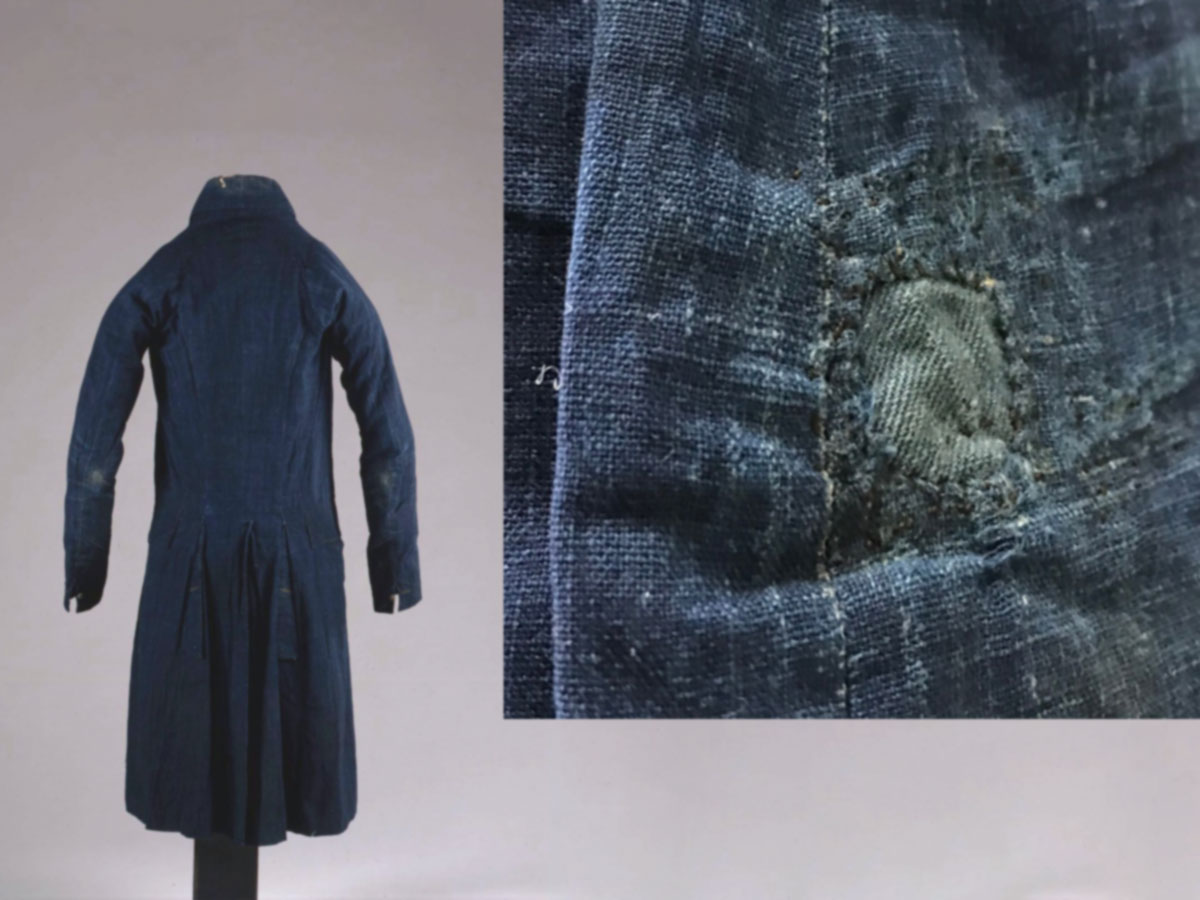Using 18th-century techniques to increase the life of your modern clothes
I know it’s happened to every one of us: you’ve got that favorite pair of jeans that go with nearly everything. They’re fashionable, you love how you look, once you’ve got them on you are ready to conquer the day. You’ve built a relationship with those jeans, you think you’re in for something long term. And then one day...a hole emerges.
What do you do? Ripped jeans are still “in” but let's be real that doesn’t mean it's everyone’s style. And what if it’s that inner thigh tear we all experience? This is your favorite pair of jeans...Do you just throw them out and hope to find the same style? The idea of repairing said treasured jeans might seem far beyond many people’s skill sets. Home economic classes are one of the few places to still learn sewing in grade school, but it might not have seemed worth your time. Trust me when I tell you though, sewing is a life skill that is never too late to learn. You don’t have to be the next Coco Chanel to mend your clothes and keep yourself rocking those jeans for a good bit longer, and if the founding fathers could live their entire lives in mended clothing, we can too. Quite different than today’s common practice of throwing scraps away!
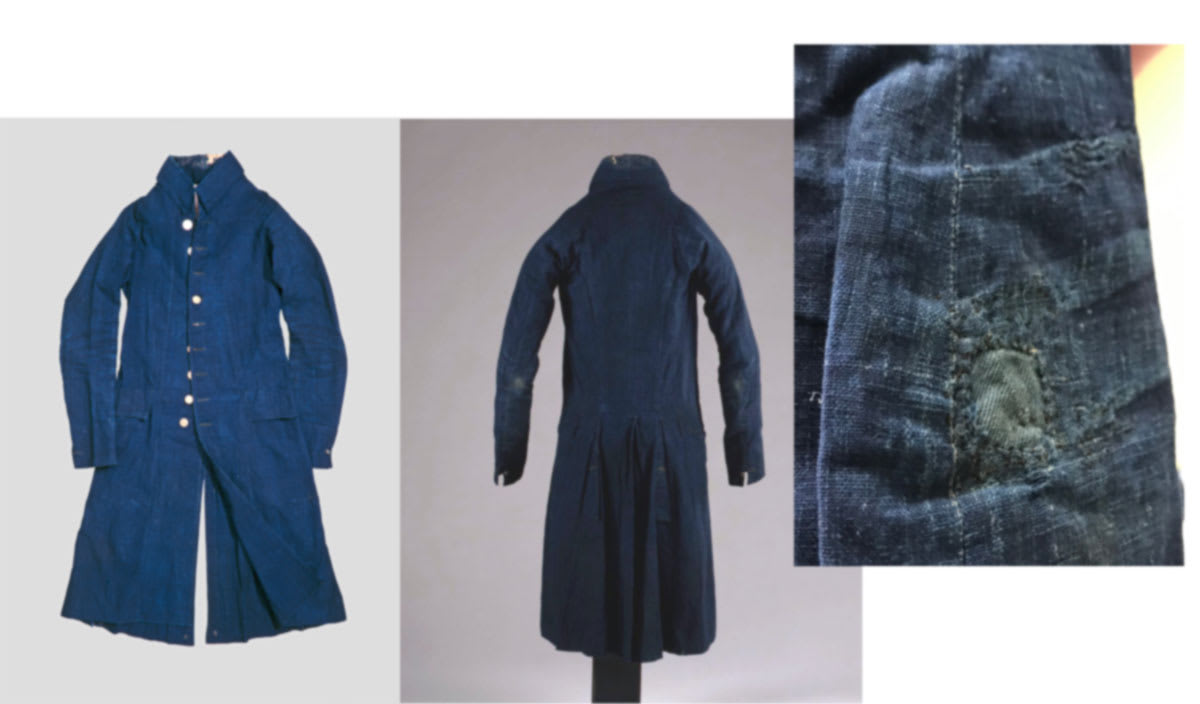
This coat once belonged to Thomas Jefferson. It dates to around 1800 and since Jefferson served as the 3rd President of the United States from 1801-1809 it's even possible he wore this during his administration. What you may have noticed in the second picture are those two light spots on the elbows, a very common place for wear and tear. A slightly closer look at this beautiful antique shows in the third picture — it has, you guessed it, elbow patches! In the 18th century, clothing repair was an absolute necessity. Everything was hand sewn, production times were long, and fabric was expensive. If you had a coat made, or made one yourself, the scraps were kept to use as patches for repairs or panels to let out the coat as you grew with it.
It is important to note that Jefferson probably would not have been the one to mend his own clothes. A gentleman of his era might not even have known how. As a slaveholder it is most likely one of his enslaved people would have been the one to patch, darn, and repair his clothing. This valuable skill might have afforded them some relief from harder forms of labor and set them above their fellow enslaved people on the plantation. They also were sure to have mended their own clothes, needing them to last infinitely longer than Mr. Jefferson’s. Let us take a page out of their book and hone a skill that is practical and economically frugal.

Skip ahead in time with me to WWII. Industries had to turn to wartime production and fashion was no exception. Buying new wasn’t an option, so in came the slogan “Make do and Mend!,” which was very popular in the UK but practiced across the world. In WWII, like in the 18th century, the name of the game became extending the life of a garment as much as possible, and it is a very different outlook than we have today when we rarely keep garments longer than a few years (at most).
This trend towards disposable clothing isn’t good for us, the environment, or the laborers working in factories that produce the sheer amount of clothing in demand. You may not have the budget to shop the high end 100% recycled organic cotton boutiques, and while we can hope those will become more affordable as the industry moves in a more sustainable way, it will be a long time until that’s the case. So maybe you buy one nice thing from a responsible store, or go thrifting occasionally, and the next time you pass a sewing kit in the drug store throw it in your bag (perhaps a reusable bag or maybe even an 18th century basket, both green!) and let’s explore some techniques to make the clothes you love last longer.
1. The Under Patch



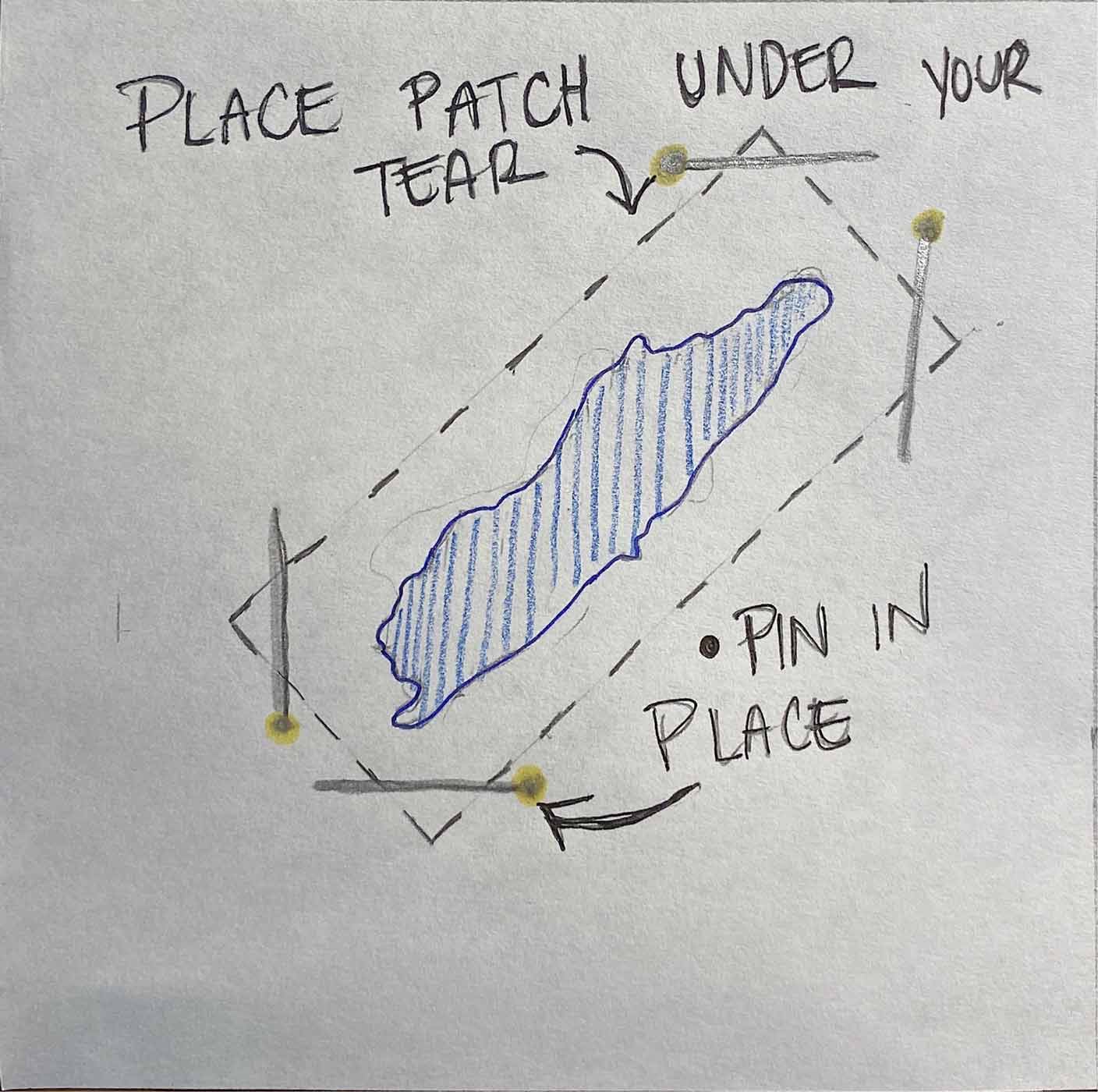


An under patch is great for times when your fabric is thick and you don’t want a raised patch shown.
2. The Over Patch
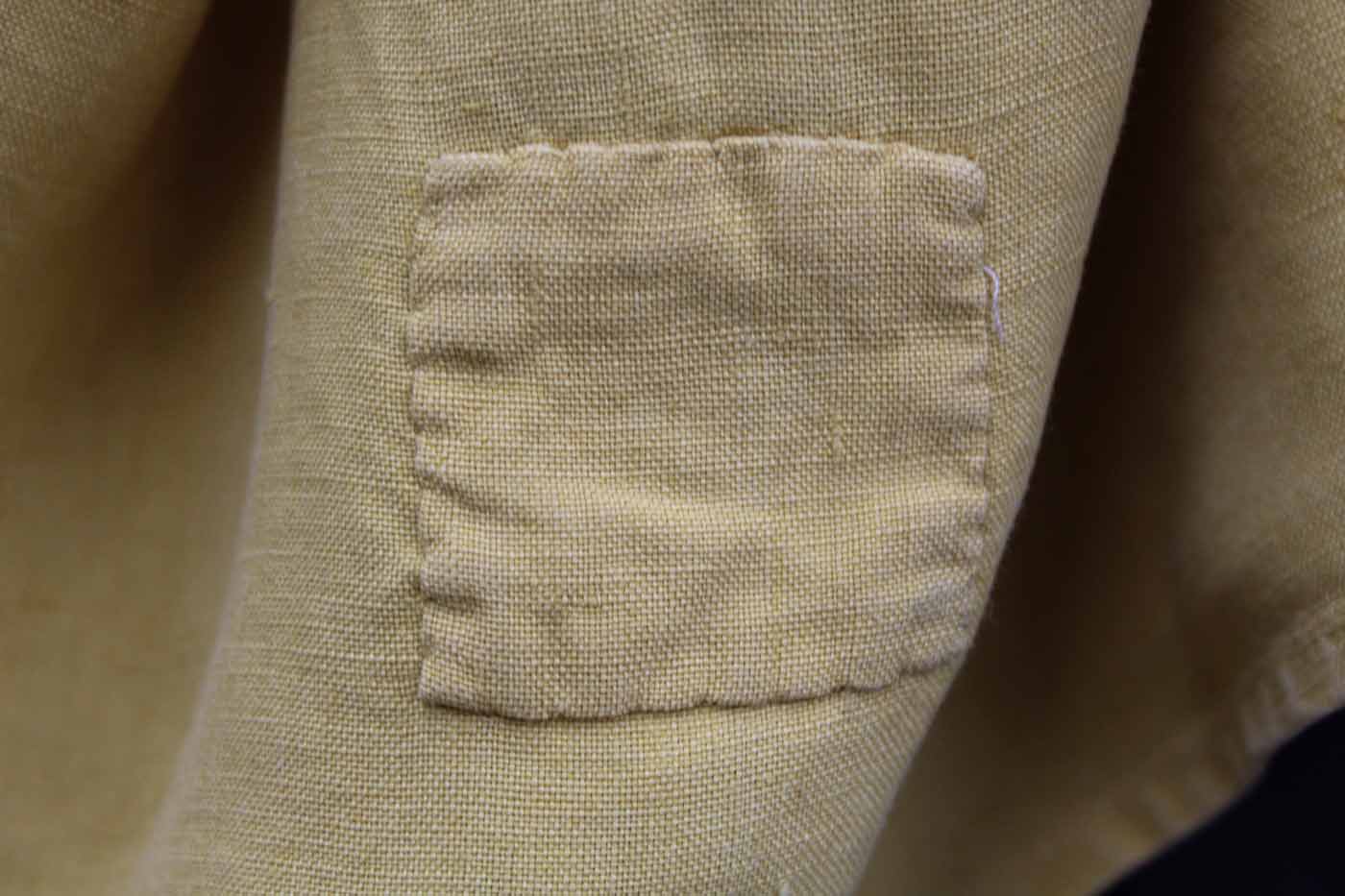
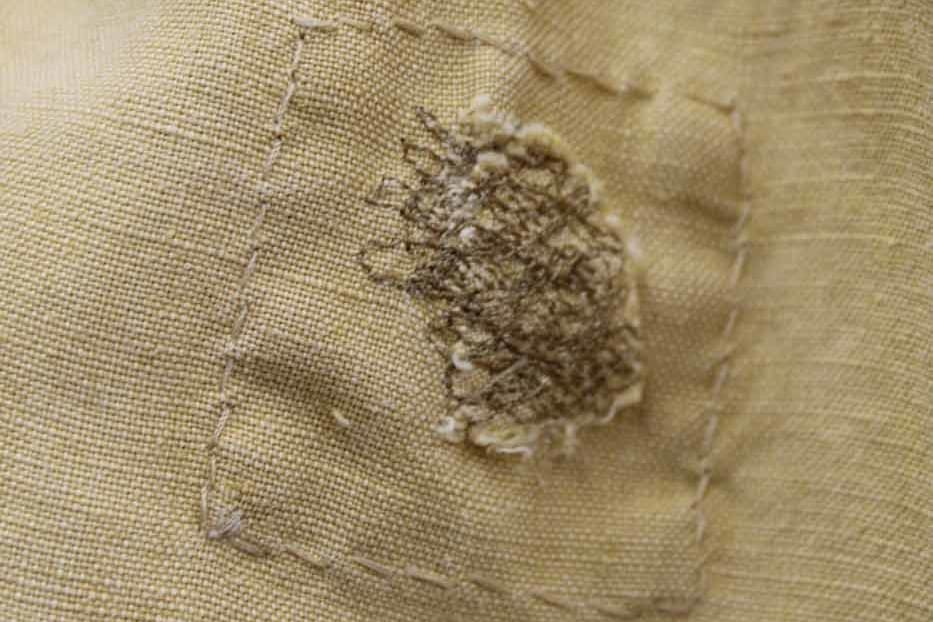
The over patch is a classic! It can be done with a similar or intentionally different fabric, just make sure you stabilize the tear or hole underneath as shown in the second picture.
3. Butterfly Stitch
The butterfly stitch helps close up small holes that might not need anything behind them by stitching back and forth by hand across the hole.
The goal of the three techniques above is to stabilize while blending the repair in as much as possible. However, if the long life of fashion has taught us anything it is that standing out on your terms is fiercely empowering. So, let's take a look at a stitcher embracing a newer technique called visible mending. Michael Ramsey is one of my many talented coworkers in our Costume Design Center. He transformed a friend’s beloved denim jacket, purchased in the 1970’s, into a visual mending masterpiece. Jefferson would not have had his coat mended in this way, it was not being done at the time, but if you are mending and have the option, make your mark! Clothes represent you and if something has sentimental value, or you are looking for ways to cut down on your waste (or both) keep your clothes alive and show them off.
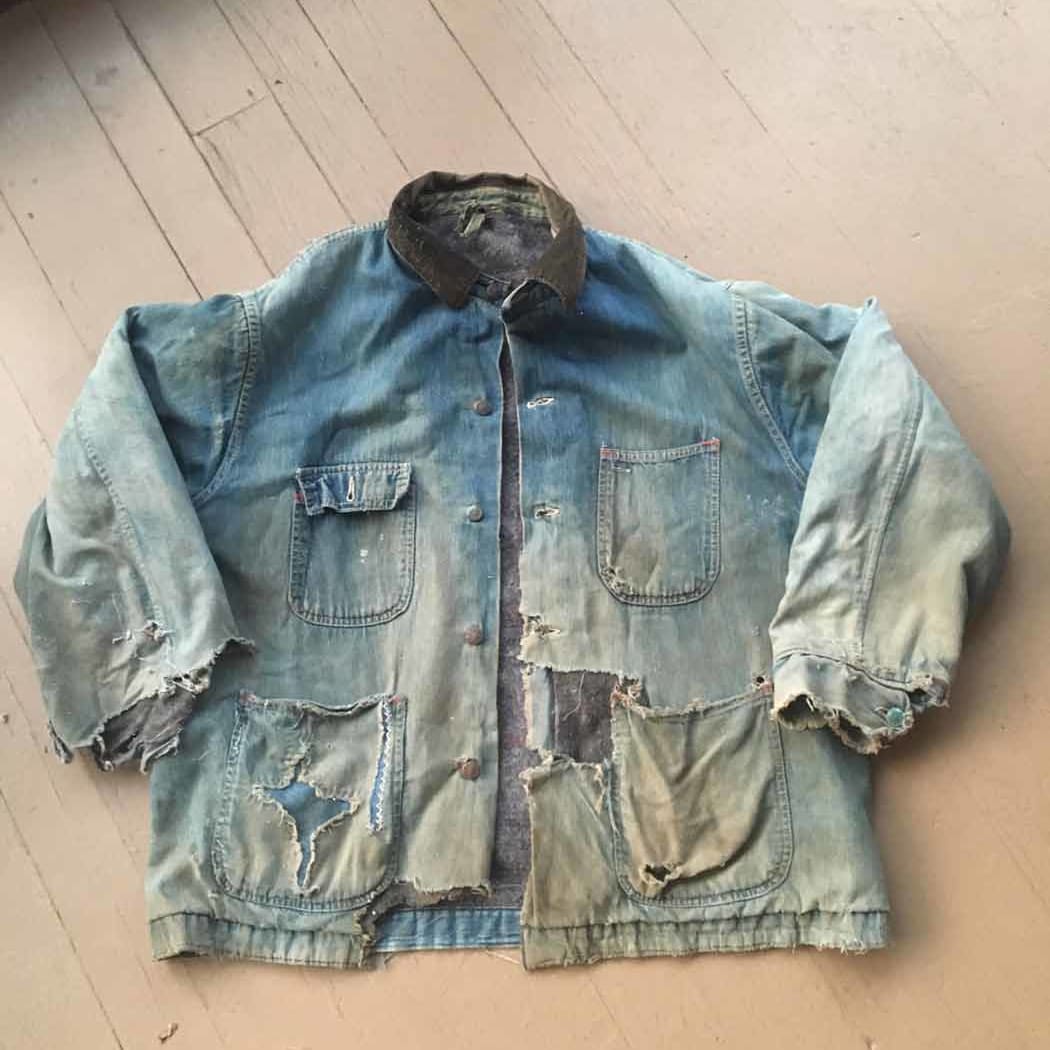

Before and After of Visually Mended Jacket c1970 by Michael Ramsey

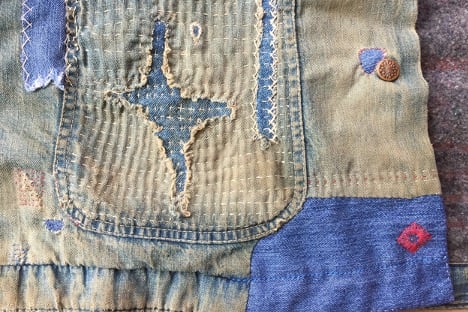
Details of Cuff and Pocket mending of coat by Michael Ramsey
I will admit I did not do much mending before I started working at Colonial Williamsburg. My college degree was all about design and making new. I repaired the odd thing for a family member or altered my thrift store finds, but I didn’t appreciate or become efficient at mending until spending 2.5 hours 5 days a week repairing our 18th-century costumes. Getting good at mending took time, patience, some strength (hand sewing takes some muscle!) but now it is almost meditative. So, if you’ve got a garment that needs some care, think about what you could be repairing with your hands while you watch Netflix. Now is as good a time as any. Make your mark, and mend!
Olivia Ballard is a Tailor A in Colonial Williamsburg’s Costume Design Center. She has been with the Foundation for almost two years and continues to be extremely grateful for the opportunity to hone her craft within its historic walls. She received her bachelor’s degree in Fashion Design from Drexel University
